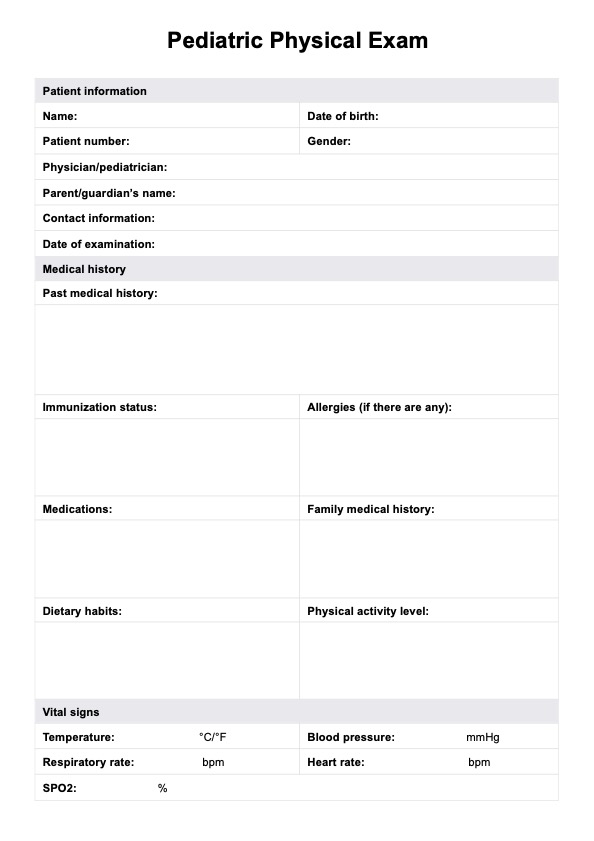A Pediatric Physical Exam involves a comprehensive assessment of a child’s growth, development, and overall health, including a review of medical history, vital signs, and a systematic physical examination of specific organ systems. It helps detect significant conditions, monitor milestones, and guide preventive care such as vaccinations and screenings.

Pediatric Physical Exam
Learn how a Pediatric Physical Exam how. Download a free template for your practice today.
Pediatric Physical Exam Template
Commonly asked questions
General appearance includes observations of the child's alertness, posture, skin tone, and overall well-being. It provides critical clues about nutritional status, hydration, distress levels, and any visible abnormalities that may indicate an underlying significant condition.
Standard measurements include height, weight, head circumference for infants, blood pressure, respiratory rate, heart rate, and oxygen saturation. These values help track growth, assess development, and identify abnormalities requiring further evaluation.
EHR and practice management software
Get started for free
*No credit card required
Free
$0/usd
Unlimited clients
Telehealth
1GB of storage
Client portal text
Automated billing and online payments











